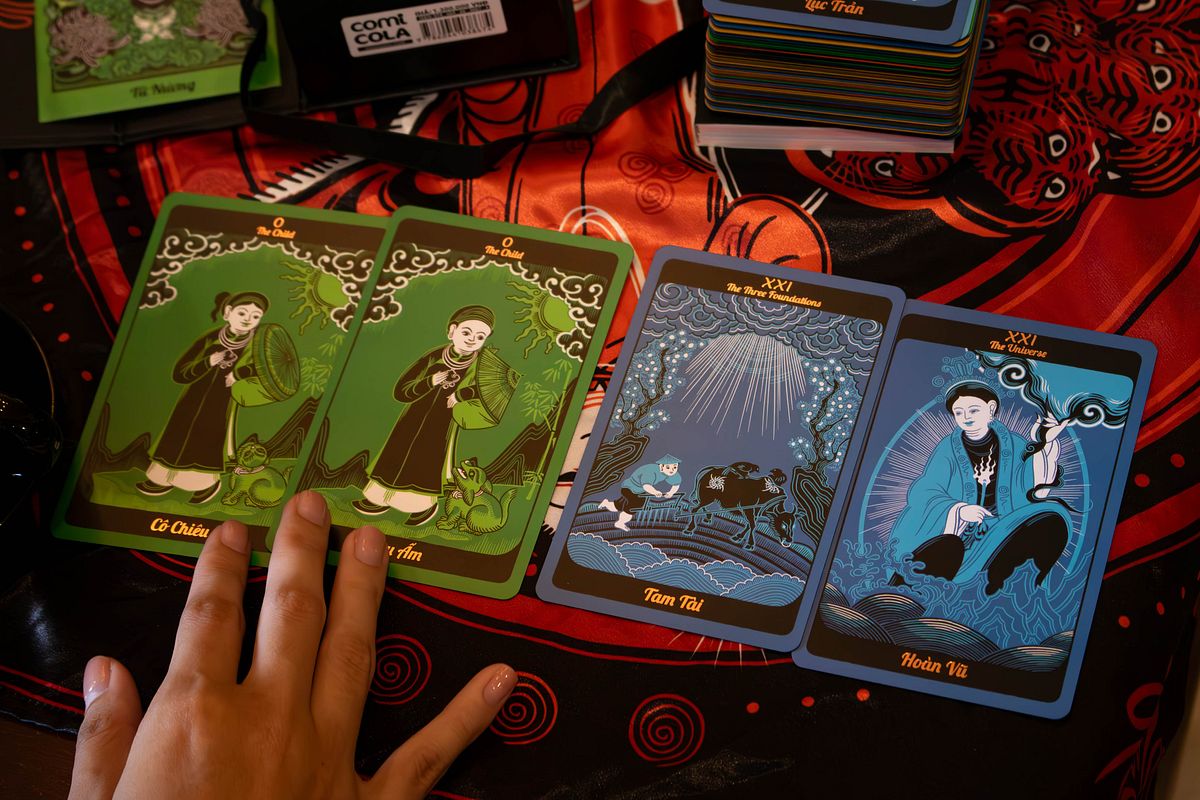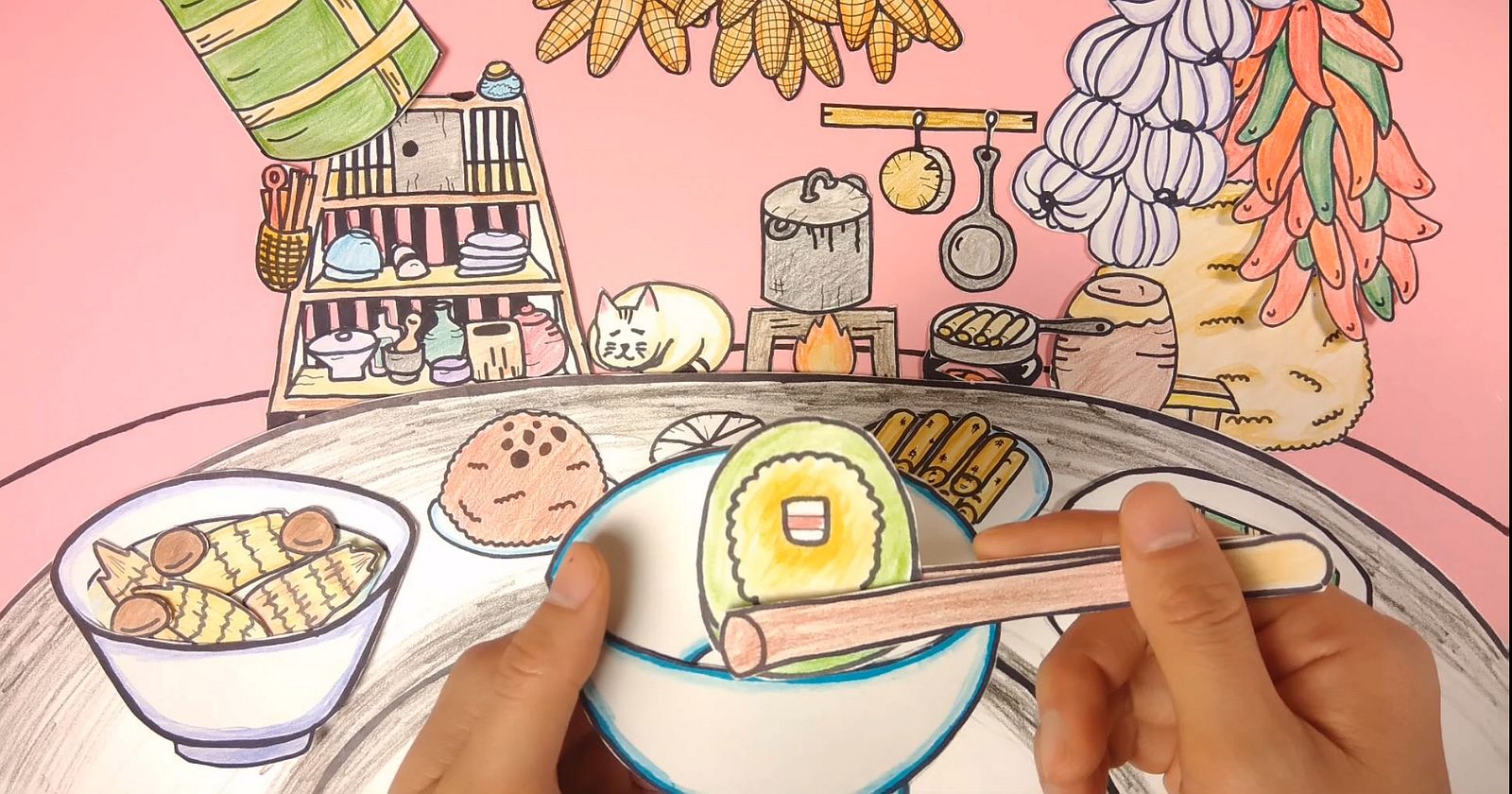Tarot decks can feel written in a foreign language.
The cards’ images, typically drawing from Renaissance Europe, Christian mysticism, and Greco-Roman allegories, can feel alien, even to those of us who speak the symbols fluently. U Linh Tarot was the first time I saw cards that could “speak Vietnamese.”
Illustrated by artist Trần Nguyễn Anh Minh, also known as Chú Mèo Kì Diệu, U Linh is a Tarot deck rooted in Vietnamese folk spirituality, inspired by motifs as varied as Đông Hồ woodcuts, Việt Điện U Linh Tập, imperial robes, and village legends. For Anh Minh, the deck is more than a passion project.
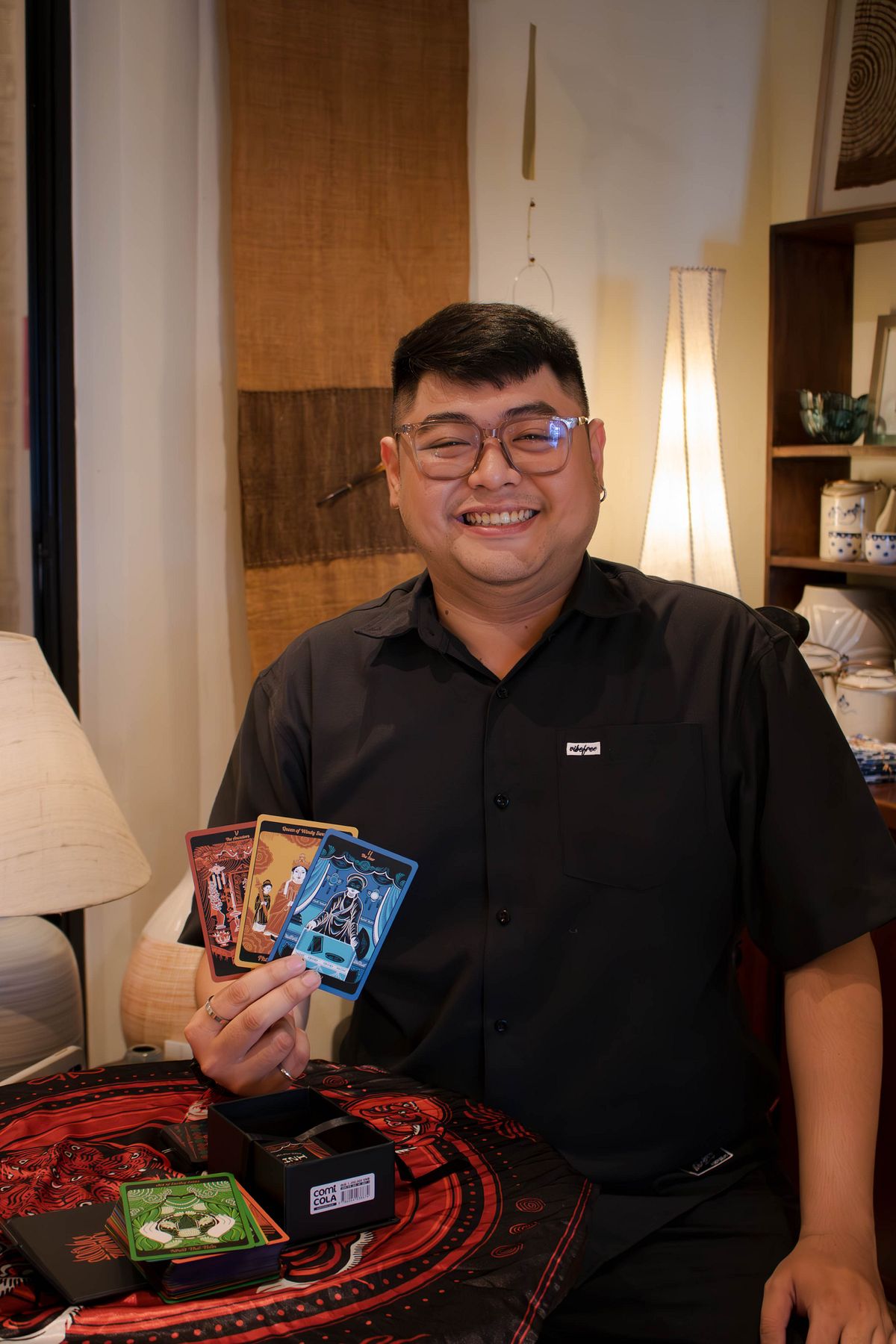
Trần Nguyễn Anh Minh, also known as Chú Mèo Kì Diệu.
“From 2009 to 2021, there wasn’t a single Tarot deck from Vietnam. We kept using foreign decks, and it felt disheartening. Vietnam doesn’t lack culture, so why don’t we have our own voice in the Tarot world?” Anh Minh explained when I interviewed him at his home last month. That question became the seed for U Linh Tarot. And from that seed bloomed a vivid cosmology: one that’s not only Vietnamese in content but Vietnamese in structure, rhythm, and soul.
Before U Linh, there was Thiên Địa Nhân. Anh Minh’s first deck, his undergraduate thesis at Văn Lang University, was a travel-inspired journey through Vietnam’s landscapes and temples. While Thiên Địa Nhân celebrated beauty rooted in the physical world and specific places, Anh Minh was drawn to portraying beings of the spirit realm.
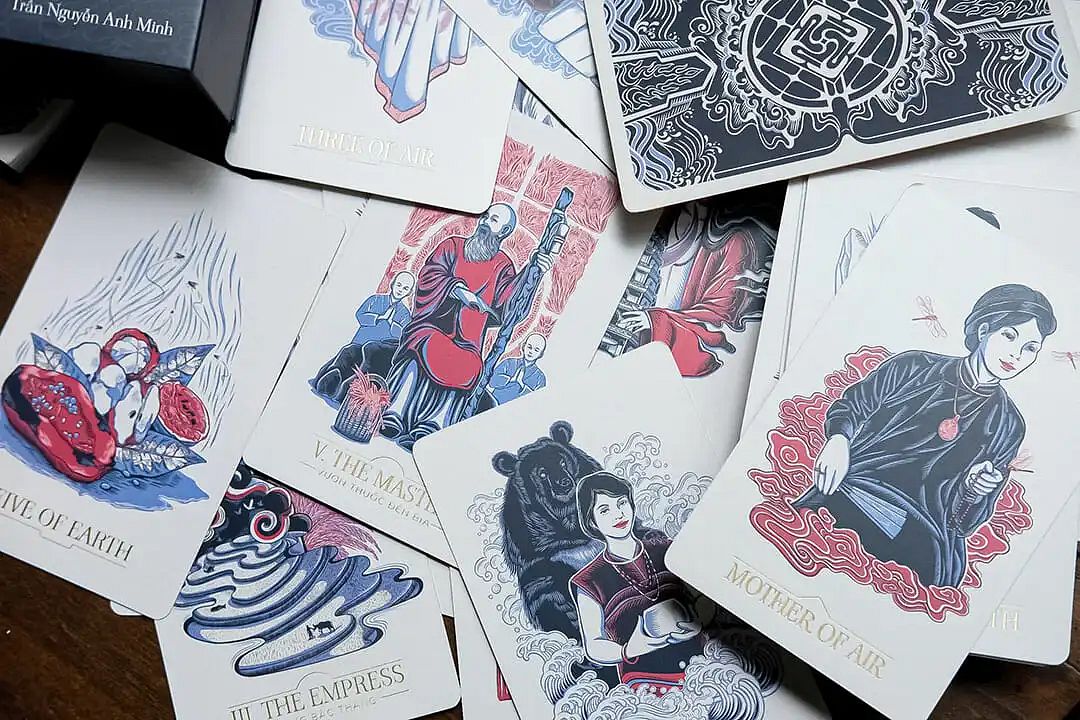
Thiên Địa Nhân, Anh Minh's first deck. Photo via Comicola
“U Linh actually came first, as an idea,” he confessed. “But it had a harder birth. Thiên Địa Nhân was like the strong older brother while U Linh is the little sibling that needed protection.”
The delay was strategic. He needed time. And he needed help, especially from his university friend, an Lang Hoàng Thủ Thư, whom he credited as indispensable: “Without her, there wouldn’t be this deck. She’s the one who helped me connect with culture, spirituality, and our roots.”
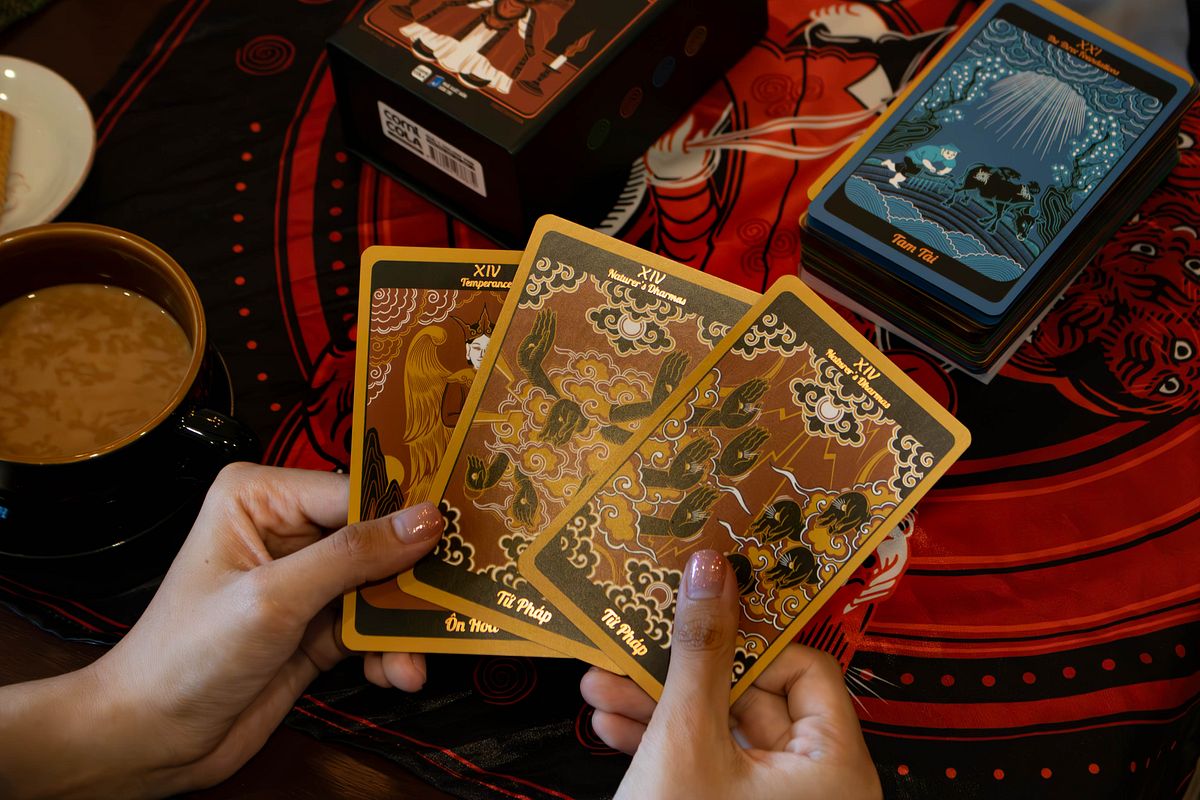
That collaboration allowed U Linh to become one of collective resonance. The U Linh Tarot is not a literal translation of the popular Rider-Waite deck from 1909. Instead, Anh Minh treats each card as a question: “What is this card’s soul? And where in Vietnamese culture does that soul live?”
In traditional Western decks, the Three of Pentacles card is often illustrated through the building of a cathedral, symbolizing cooperation and shared vision. In U Linh, this concept is reimagined through the Đông Hồ painting Hứng Dừa (Catching Coconuts), where three figures embody the essence of teamwork: one climbs the tree, another catches the coconuts, and a third stabilizes the base. Their coordinated effort becomes a living metaphor for harmony and mutual support in any collaboration.
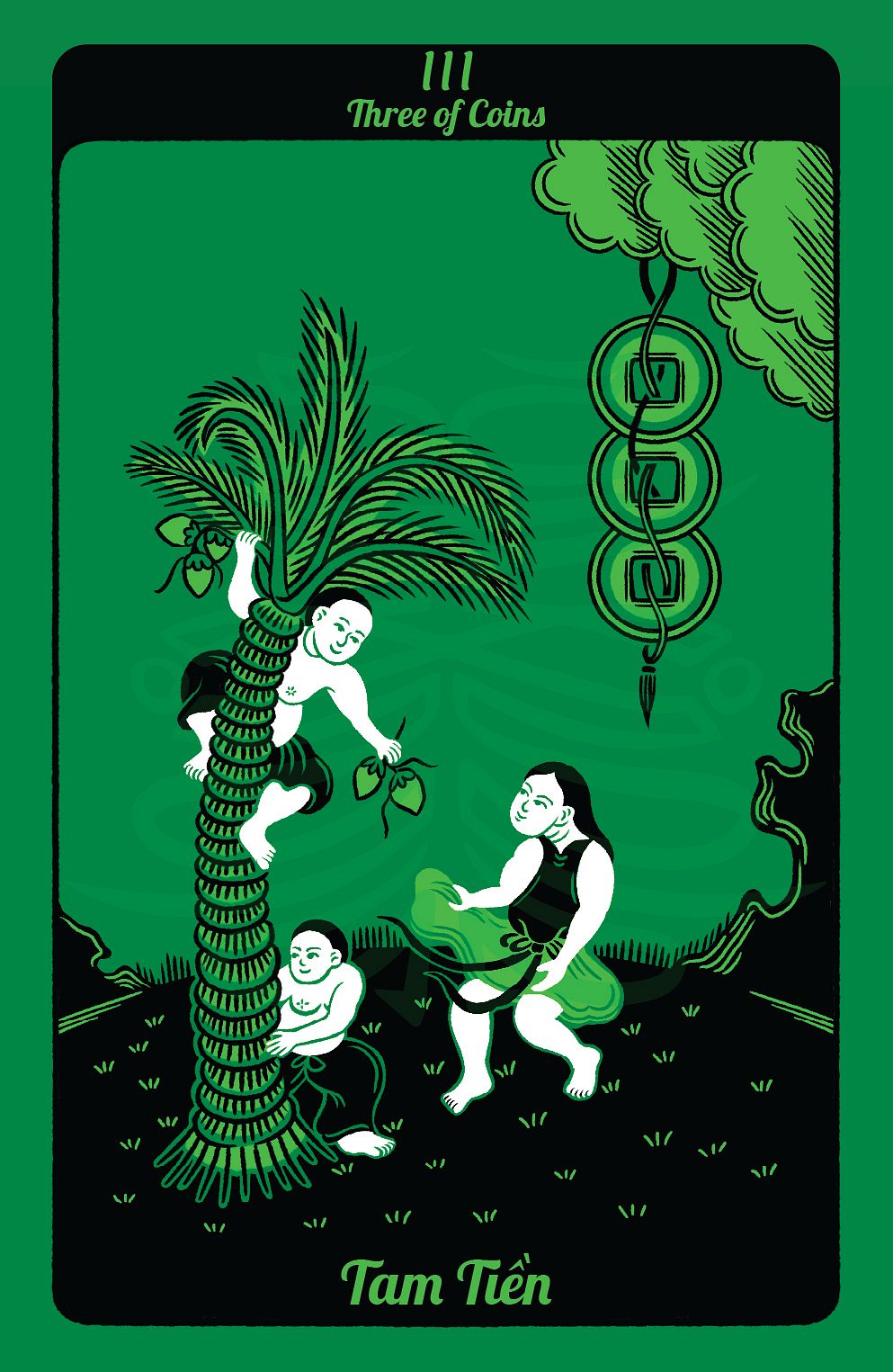
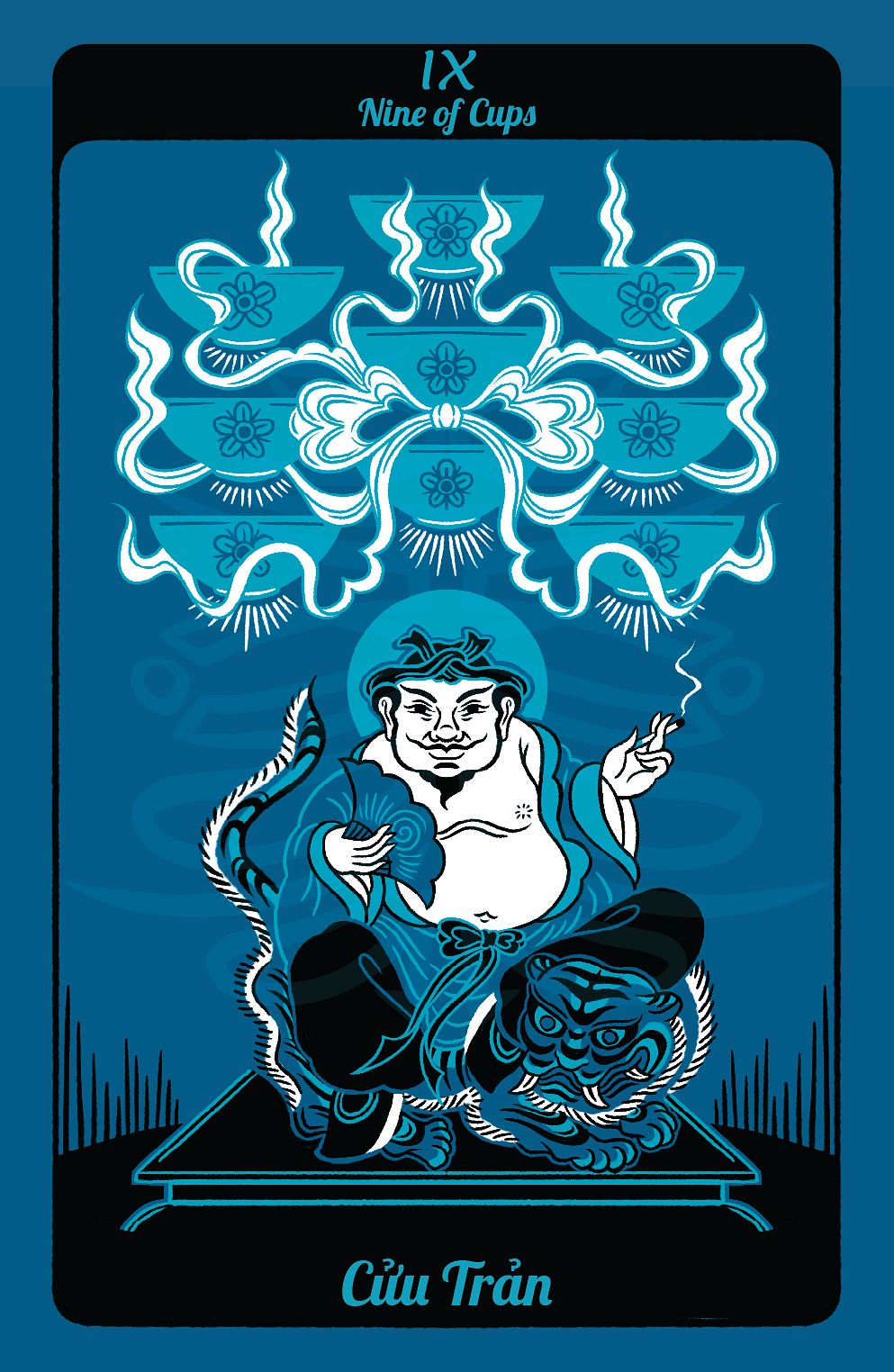
The Three of Pentacles card (left) and the Nine of Cups (right). Photos via Anh Minh.
Known as the “wish card,” the Nine of Cups represents emotional satisfaction and fulfilled desires. U Linh interprets this archetype through the joyful figure of Ông Địa, the Southern guardian deity in Vietnamese folk tradition. With his cheerful demeanor and round belly, Ông Địa symbolizes abundance, ease, and benevolence. People often pray to him for the return of lost items or blessings, making him a natural embodiment of the card’s spirit: relaxed joy and the quiet confidence that good things will come.
Meanwhile, The Star card traditionally represents spiritual clarity, guidance, and a sense of renewed purpose. To design his version of it, Anh Minh faced the challenge of finding a Vietnamese symbol that captured this radiance, as five-pointed stars are not commonly used in traditional sacred imagery. The turning point came with the discovery of embroidered star motifs on the ceremonial robes of the Nguyễn dynasty. Drawing from this imperial heritage, U Linh’s Star card shines with cultural depth, affirming the deck’s ability to bridge past and present with luminous hope.
Anh Minh chose images with ritual care. The Tower is reimagined through a culturally resonant symbol: a coconut tree struck by lightning. Rather than depicting a European-style tower crumbling in chaos, the image evokes a distinctly Vietnamese belief that lightning is a form of divine punishment, striking down where evil resides. Here, the Tower becomes Thiên Ách, or "Heaven's Judgment." When it appears, the card speaks not just of sudden upheaval, but of spiritual reckoning. It may signal a necessary and forceful intervention – an act of justice, sweeping away hidden corruption or false foundations.

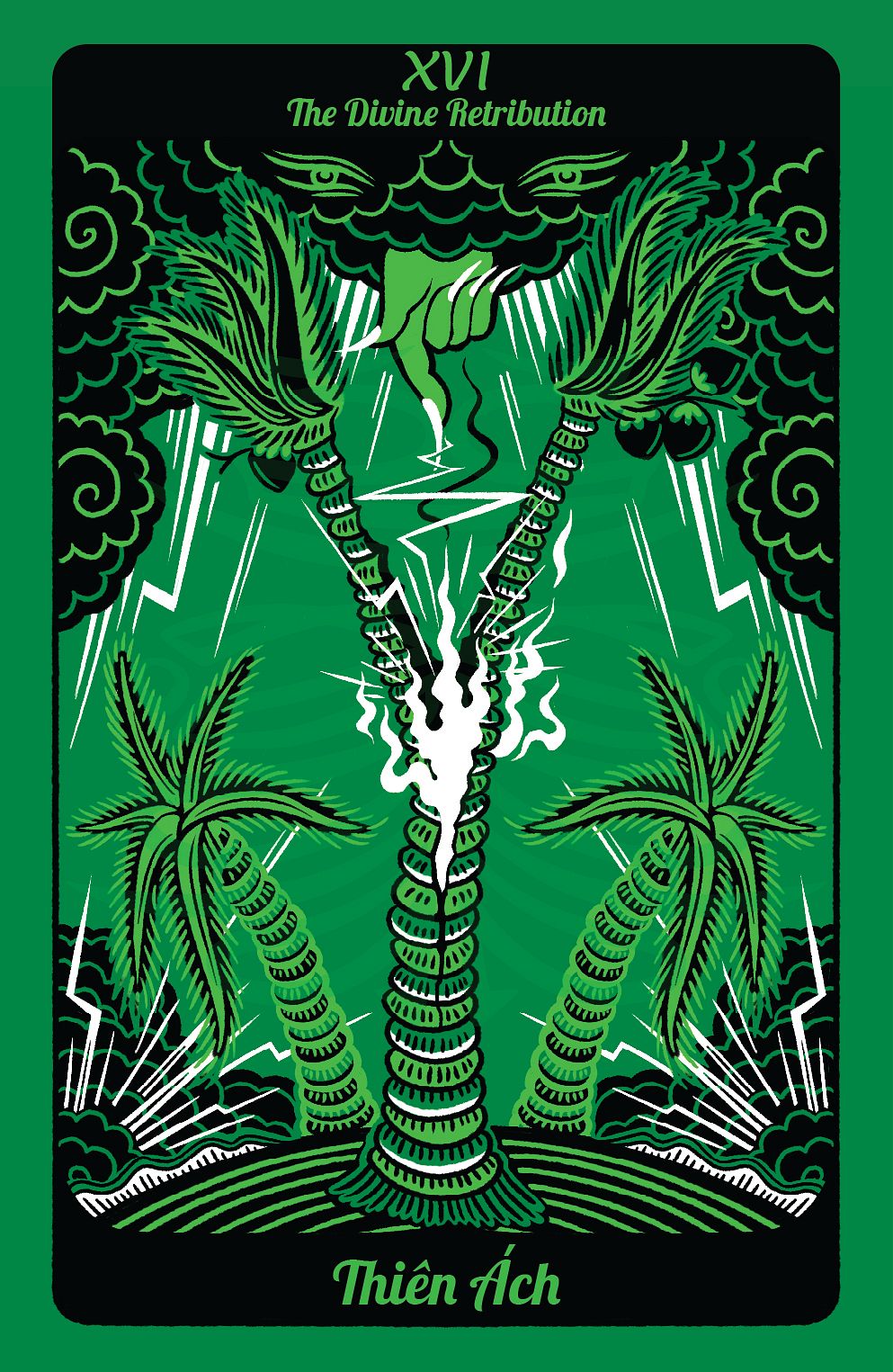
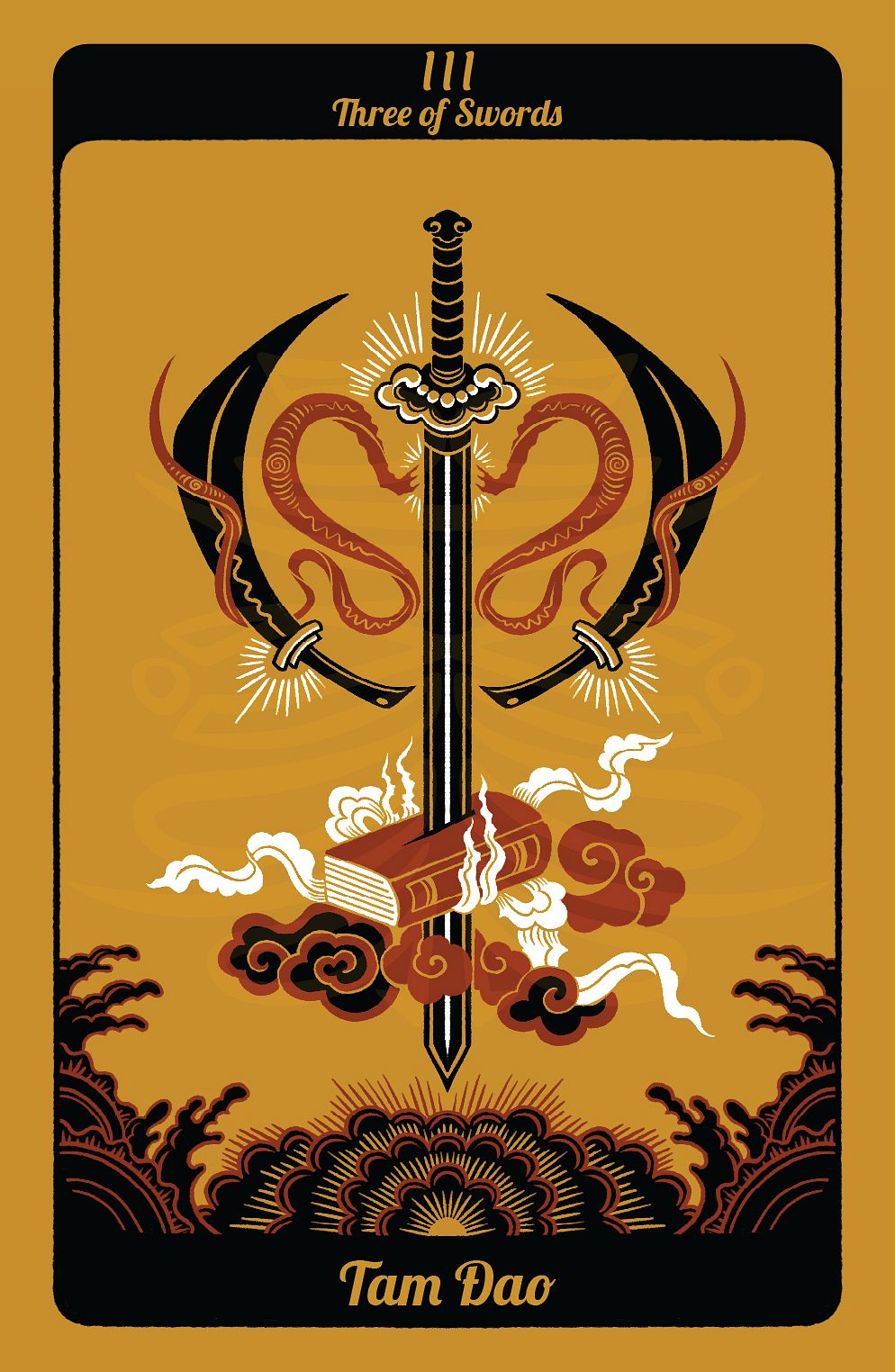
The Star card (left), Tower card (center) and Three of Swords (right). Photos via Anh Minh.
Even the Three of Swords, a card synonymous with heartbreak, was reinterpreted for the deck. Rather than focusing solely on emotional pain, this version emphasizes reason triumphing over emotion. A sword pierces a book, not a heart, signaling the clarity that comes from difficult but necessary decisions. It reflects the kind of heartbreak that stems from doing what is right, such as leaving a harmful relationship or letting go of an illusion. The card honors the quiet strength it takes to choose wisdom over attachment, even when it hurts.
Though spiritually inspired, U Linh required relentless design discipline. Anh Minh drew all 78 cards between Tết and April; just over three months. “My iPad didn’t have any games. When it ran out of battery, I slept. When it was full, I got up and drew. If I didn’t finish two cards a day, I wouldn’t let myself sleep.”
Matching this maniacal pace was a near-obsessive attention to symbolic structure. As a trained designer, he approached each Tarot card not as an illustration, but as semiotics. “Tarot isn’t just illustration; it’s language. Why is the hand raised instead of lowered? Why hold a cup and not a wand? Everything must have a reason.”
Anh Minh consulted Lang Hoàng Thủ Thư, sketched, rejected, revised, and repeated. Along the way, he introduced extra cards and alternate versions of traditional archetypes to reflect Vietnamese dualities. The Fool, which marks the beginning of the Tarot journey – a symbol of innocence, freedom, and stepping into the unknown – appears in two forms: Cậu Ấm and Cô Chiêu, representing parallel masculine and feminine paths.
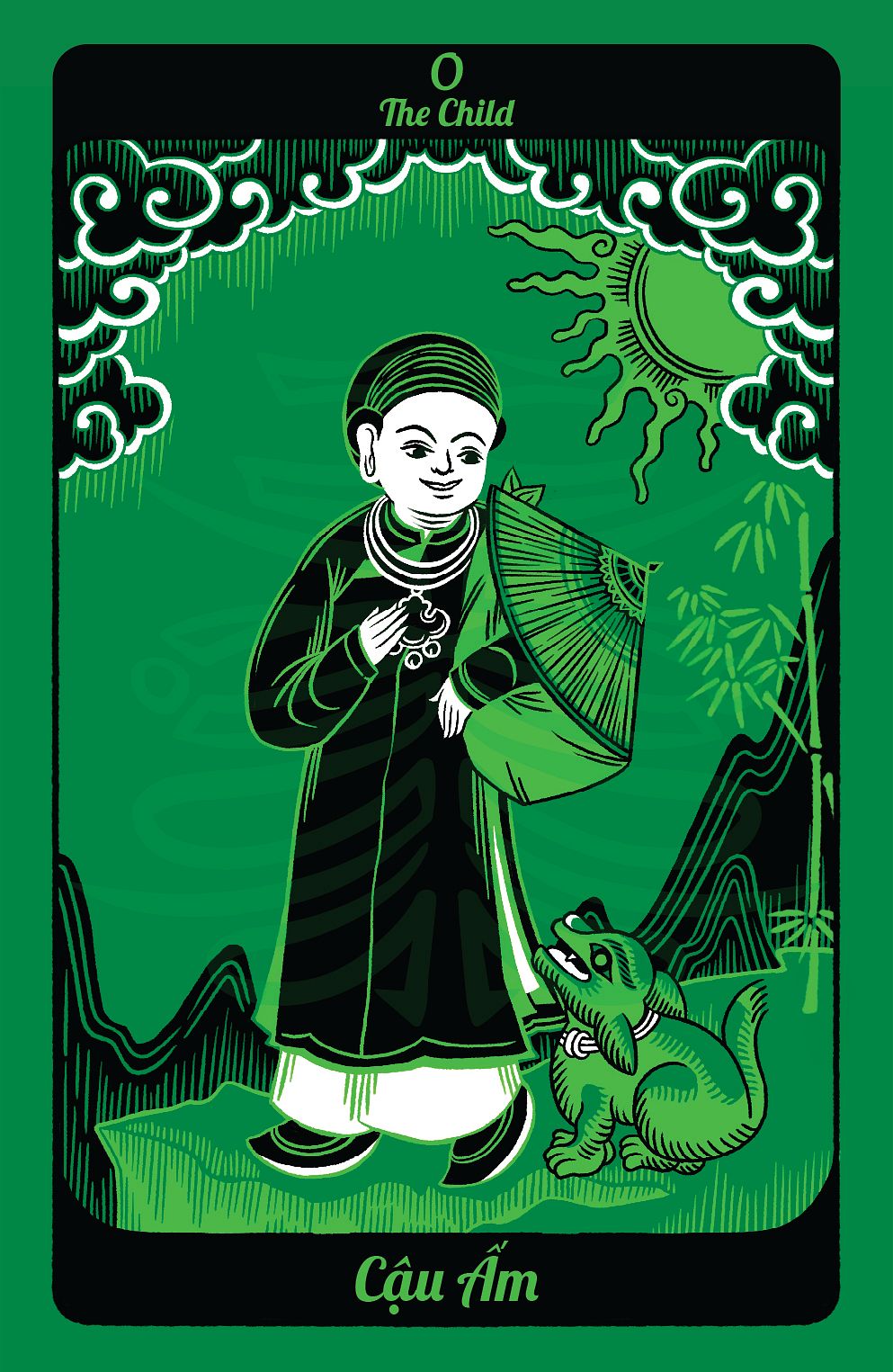
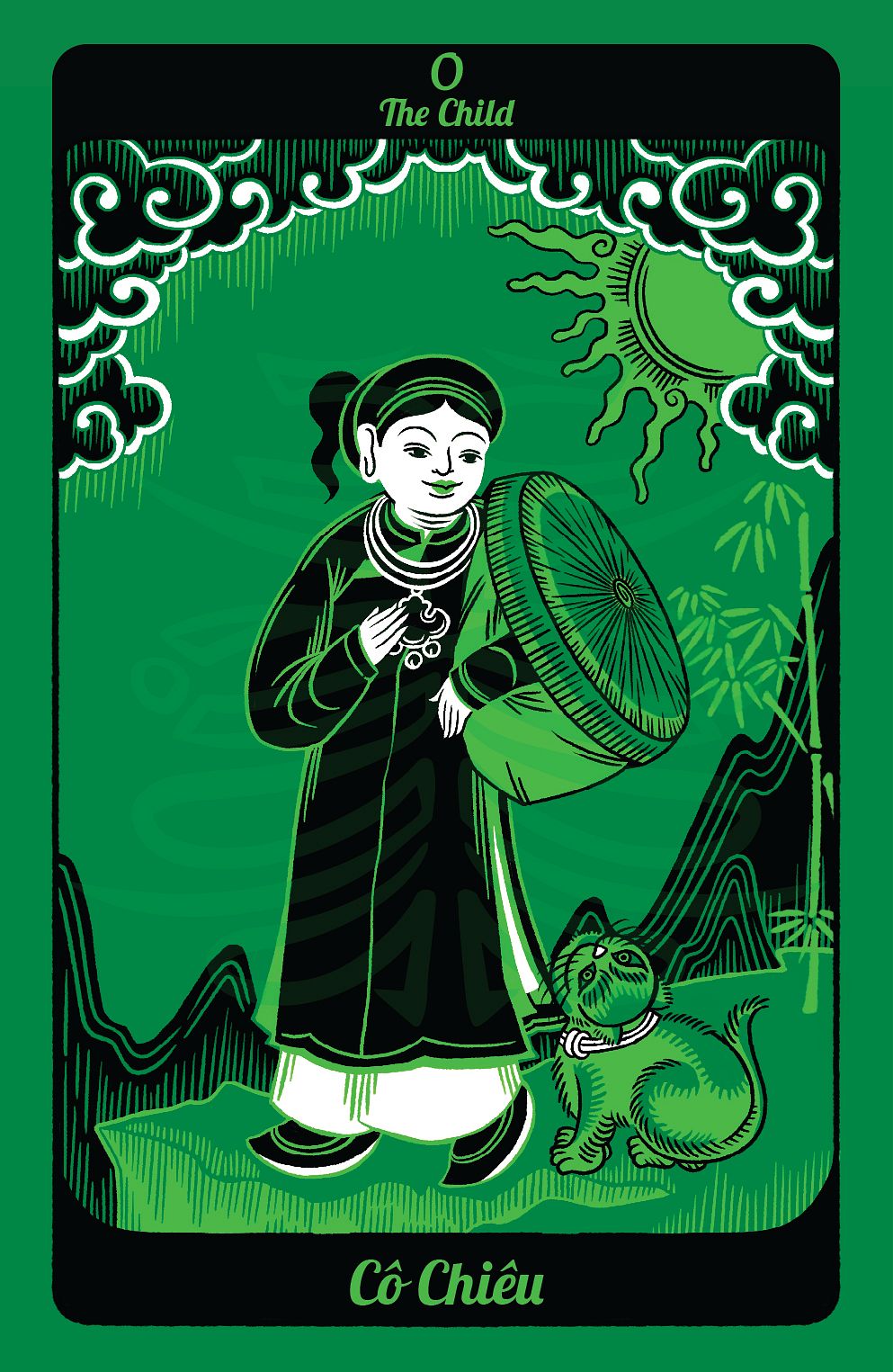
The Cậu Ấm card (left) and the Cô Chiêu card (right). Photos via Anh Minh.
At the journey’s end is The World, the final chapter in the Fool’s arc, symbolizing fulfillment, integration, and wholeness. Anh Minh offers two interpretations: one depicts Cậu Ấm transformed into a grounded farmer: mature, self-reliant, and committed to the labor of everyday life after completing his quest. The other portrays Cô Chiêu as a radiant goddess having completed her inner journey of healing and self-realization and now embodying spiritual harmony and grace.
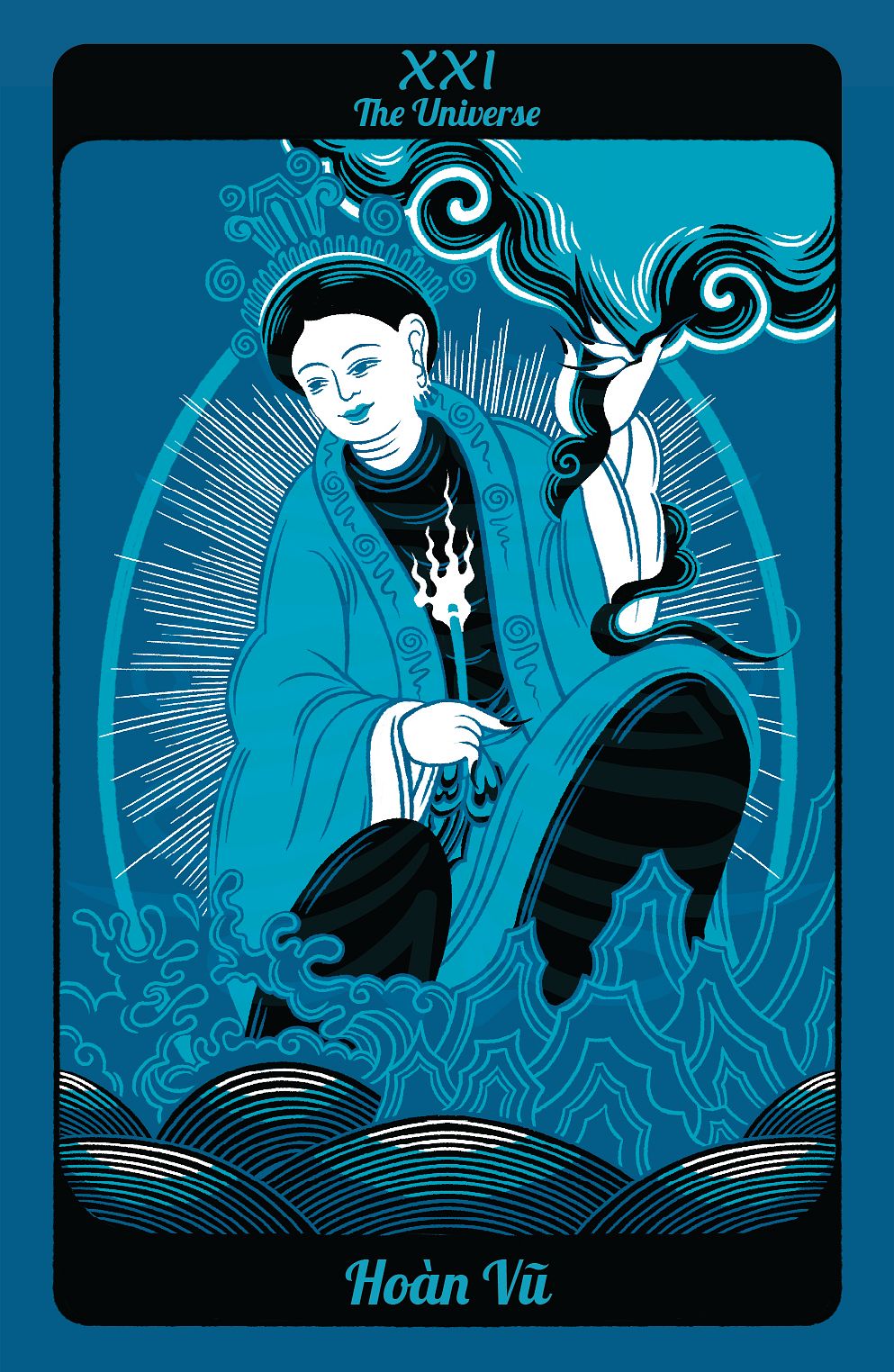
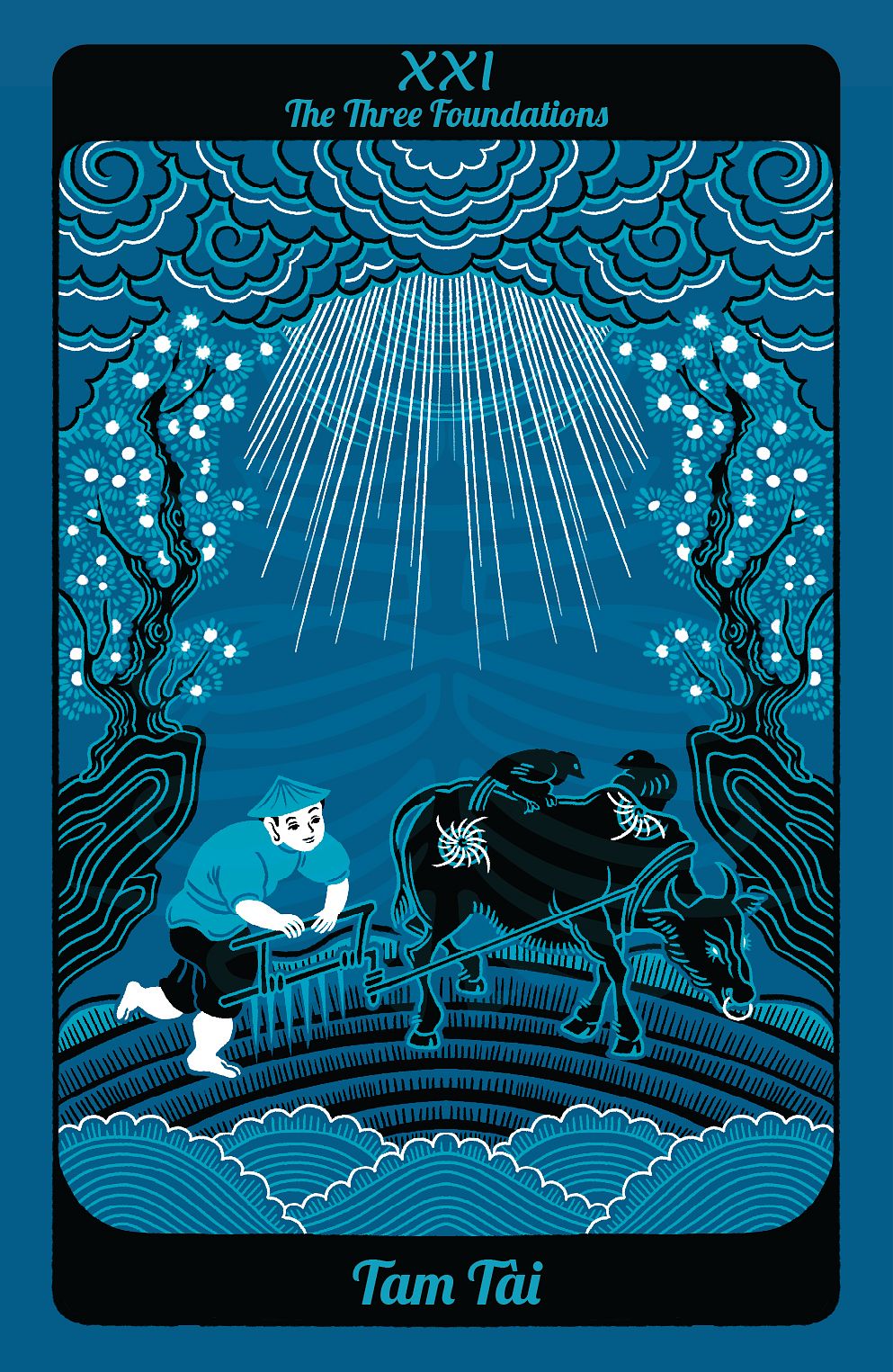
The Cô Chiêu World card (left) and the Cậu Ấm World card (right) Photos via Anh Minh.
“This deck strays a bit from the standard, but that’s the Vietnamese yin-yang philosophy. If there’s a man, there must be a woman. If there’s a path of reason, there must be one of spirit.”
Many assume U Linh concerns itself with nostalgic touchpoints, but that’s not accurate. It is interested in metaphysics. “This isn’t memory,” Anh Minh said. “These are spirits who haven’t yet reincarnated. We call it memory only because we can’t see them.”
To him, the deck is not a memory book but a channel. It reveals how Vietnamese ancestors encoded ethics and cosmology in stories, and how they interpreted suffering as imbalance and harmony as sacred. In his words: “Tarot is a philosophical book. It may have only 78 cards, but each card is a chapter on human nature.”
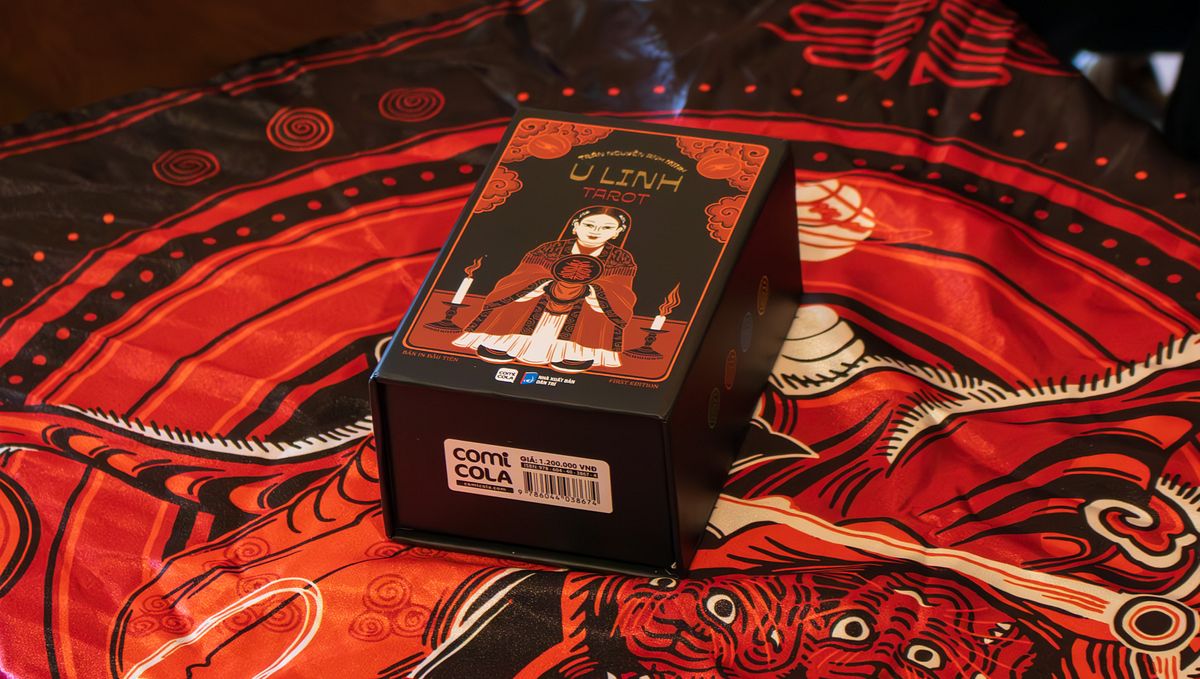
Though the first print run sold out quickly, Anh Minh is already preparing a reprint and a companion website, where he plans to elaborate on symbols too controversial or complex for the booklet included with the deck. He’s also mentoring new artists working on folk-inspired decks, collaborating on projects like Sông Núi Nước Nam, and joining group exhibitions that present Vietnamese spiritual art in contemporary formats.
“We must know who we are,” he told me at the end. “U Linh is an excuse to explore Vietnamese culture for those who don’t know it yet, who’ve never heard of it.”
As a reader, a Vietnamese, and a seeker, I know this deck is not merely about fortune. It is about becoming fluent in our own sacred language.

